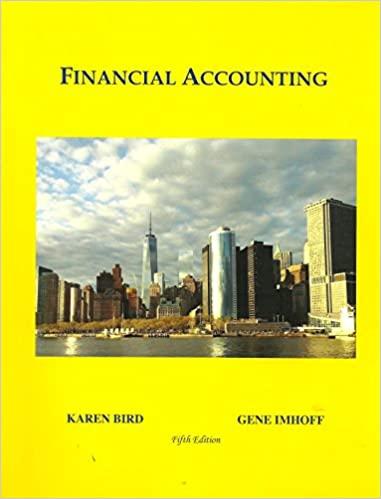Mr and Mrs Vincent have $50,000 of non-superannuation savings invested in a managed fund operated by Morrison Investments. The fund has equal exposure to each of the following asset classes: Australian Equity, Australian Bonds, Cash, International Equity, International Equity (Hedged), International Bonds (Hedged) and A-Reits. You are tasked with checking the performance of the fund.
1Start your analysis by completing the table below. Specifically, using the information provided in Exhibit A, estimate the arithmetic mean of annual returns estimated using the 10- years and 20-years to the end of 2020, as well as the whole period 1987-2020 inclusive. Then estimate the standard deviation (sample) of annual returns using the whole period to the end of 2020. Round your answers to one decimal place. (The mean 10-year annual return and the standard deviation of annul returns for the whole period calculated for the Australian equity asset class have been completed for you as a guide. Now compare your returns calculations to Exhibit B which is a graph taken from Morrison Investments annual report for this managed fund. Note that your average and the average reported in the annual report use the same set of annual returns. Explain why they are different (your calculated mean should be higher). Finally, compare the estimates in Exhibit B for Australian listed property and Residential Investment Property. Explain why they are so different. Also explain why the Residential Investment Property return is possibly not that informative from an investment perspective.


Mean Annual Returns Std. Dey of Annual Returns 7.8% Australian Equity Whole period 21.5% Australian Bonds Whole period International Equity Whole period International Equity (Hedged) 10-Year 20-year Whole period 10-Year 20-year Whole period 10-Year 20-year Whole period 10-Year 20-year Whole period 10-Year 20-year Whole period 10-Year 20-year Whole period 10-Year 20-year Whole period Whole period International Bonds (Hedged) Whole period A-Reits Whole period Cash Whole period Exhibit B: Gross returns for 10 years to December 2020 Growth managed fund* Balanced managed fund Conservative managed fund" Global listed property (unhedged) Global shares (unhedged) Global shares (hedged) Cash Global bonds (hedged) Australian bonds Australian listed property Residential invesment property Australian shares 0.0 2.0 4.0 6.0 8.0 10.0 Notes: *Only before-tax returns have been calculated. Compound returns are calculated over a 10-year period to December 2020. The returns are equivalent to the per annum compound returns that investors would have received for an investment in the particular asset class if they invested in an equivalent portfolio over the two periods. The Australian listed property measure is based on the returns implied by the S&P/ASX 200 Property Trust (Accumulation) Index. Acquisition and disposal costs, such as brokerage and stamp duty (where applicable), have been factored into the return calculations. Assumptions have been made with respect to the tax treatment of listed property income, including the component of tax-free income (abolished in July 2002) and tax-deferred income. The residential property measure is a population-weighted average return calculated across major capital cities. Increases in value are based on median house prices obtained from the Real Estate Institute of Australia. Data from the Australian Bureau of Statistics is used to make adjustments for capital improvements. Net rental income allows for vacancy rates, maintenance expences, management fees, governance charges, land tax and insurance. Acquisition and disposal costs include conveyancing, stamp duty and agent's fees. All returns are net of costs. Past performance is not a reliable indicator of future performance. Mean Annual Returns Std. Dey of Annual Returns 7.8% Australian Equity Whole period 21.5% Australian Bonds Whole period International Equity Whole period International Equity (Hedged) 10-Year 20-year Whole period 10-Year 20-year Whole period 10-Year 20-year Whole period 10-Year 20-year Whole period 10-Year 20-year Whole period 10-Year 20-year Whole period 10-Year 20-year Whole period Whole period International Bonds (Hedged) Whole period A-Reits Whole period Cash Whole period Exhibit B: Gross returns for 10 years to December 2020 Growth managed fund* Balanced managed fund Conservative managed fund" Global listed property (unhedged) Global shares (unhedged) Global shares (hedged) Cash Global bonds (hedged) Australian bonds Australian listed property Residential invesment property Australian shares 0.0 2.0 4.0 6.0 8.0 10.0 Notes: *Only before-tax returns have been calculated. Compound returns are calculated over a 10-year period to December 2020. The returns are equivalent to the per annum compound returns that investors would have received for an investment in the particular asset class if they invested in an equivalent portfolio over the two periods. The Australian listed property measure is based on the returns implied by the S&P/ASX 200 Property Trust (Accumulation) Index. Acquisition and disposal costs, such as brokerage and stamp duty (where applicable), have been factored into the return calculations. Assumptions have been made with respect to the tax treatment of listed property income, including the component of tax-free income (abolished in July 2002) and tax-deferred income. The residential property measure is a population-weighted average return calculated across major capital cities. Increases in value are based on median house prices obtained from the Real Estate Institute of Australia. Data from the Australian Bureau of Statistics is used to make adjustments for capital improvements. Net rental income allows for vacancy rates, maintenance expences, management fees, governance charges, land tax and insurance. Acquisition and disposal costs include conveyancing, stamp duty and agent's fees. All returns are net of costs. Past performance is not a reliable indicator of future performance








